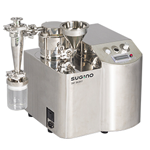Burrs are a common challenge in manufacturing. Every Monday for the next few months, we’ll share our expertise and guidance about dealing with burrs – what they are, the problems they cause, and most importantly, how to remove them efficiently.
We’ll talk types of burrs, burr classifications, and the available deburring methods.
So, what exactly is a burr?
Merriam-Webster defines a burr as “a thin ridge or area of roughness produced in cutting or shaping metal.” Wikipedia says, “A burr is a raised edge or small piece of material that remains attached to a workpiece after a modification process.”
But while correct, these definitions don’t emphasize the problems that burrs cause within the manufacturing process.
Burrs are an inherent byproduct of machining and need to be removed as efficiently as possible.
Join us over the next weeks as we cover:
👉 Reasons to deburr
👉 Types of burrs
👉 Classifications of burrs
👉 Methods of deburring
👉 The benefits of water jet deburring
👉 The benefits of mechanical deburring
We welcome your participation, so please let us know if you have specific questions you would like addressed.
Follow along on social media:














